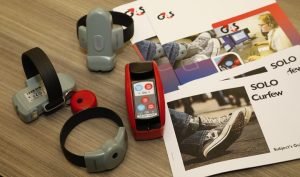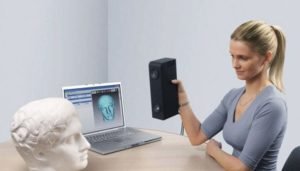Assistive technology is the technology that is used by people living with disabilities to achieve the same results with technology as the people without disabilities. Assistive technology has played a very important role in helping these people pursue the use of technology with the same results as people without disabilities.
Pros:
1. No one feels left out: The best thing about assistive technology is that there is no one who feels left out of the technology frenzy. Each and every individual has an equal opportunity to share in the technology world.
2. It is an ideal way to teach technology in an understanding way: Assistive technology is an ideal way of teaching technology in a way that everyone can understand.
3. Students are able to work at their own pace: Students leaving with disabilities are able to learn technology at their own pace and still learn the same things as those other students. No one feels like they are being pushed.
4. Students are able to accomplish more individually: Individuals living with disabilities are at a better chance of accomplishing more things individually because of assistive technology.
5. It applies to all and sundry: By being included in the regular classroom, it benefits both students with disabilities and others.
6. Students are able to achieve academic standards: It has become easier for students to achieve academic excellence and standards thanks to assistive technology. Students can hear and relate better with others which contributes to the growth and development of the students in the school.
7. Students are given the opportunity to socialize with more students: It is easier for students to socialize with more students, a fete that was previously unavailable, thanks to assistive technology. For those students who had a problem with hearing, they can now be able to hear better and so on.
8. Organizational skills: Technology can help students improve their organizational skills and also writing skills. This is because it opens up students to more opportunities.
Technology helps students reach a higher level of education: Students who were previously at risk of not reaching the highest level of education can now reach that standard thanks to assistive technology.
9. Creates awareness: Assistive technology helps create awareness among the people and helps make the lives of the people living with disabilities easier.
10. It builds social bridges: Assistive technology helps build social bridges among students.
Cons:
1. Majority of assistive technologies are very costly: Many technologies cost thousands of dollars and many school districts do not have the funds to provide these technologies.
2. It is time-consuming: To be able to use the technologies properly, training has to take place which is very time-consuming. Teachers and students alike have to be trained to use the technology.
3. Technology can never be fully relied on: As we all know; technology always has its flaws. It may fail at the time when you need it most and this may be a deal-breaker.
4. It may be subject to abuse: By having many different assistive technologies, some students may abuse the use of technology by using technologies they do not necessarily need.
5. Costly: Assistive technology is expensive. Since it requires specialized equipment, it becomes really expensive to acquire all the equipment at the same time.
6. Training is required: Teachers and students are required to be trained in the usage of assistive technology. This means that a lot of investment has to be put into assistive technology for it to make sense.
7. Lack of space efficiency: There is a lot of equipment that is required in assistive technology and this may be a problem in terms of space storage and things like that.
8. Not universally accessible: Assistive technology is a luxury that is not universally accessible by everyone. This means that there are people across the world who require assistive technology but may not be able to access it due to a lack of accessibility.
9. Not everyone owns AT equipment: Assistive technology equipment is not readily available to everyone. This is mainly due to the costly and prohibitive expenses involved in acquiring the technology. So, in as much as there are a lot of people who need the technology, not everyone has access to it.
10. It is cumbersome: AT is sometimes cumbersome to use if someone is not accustomed to it.



